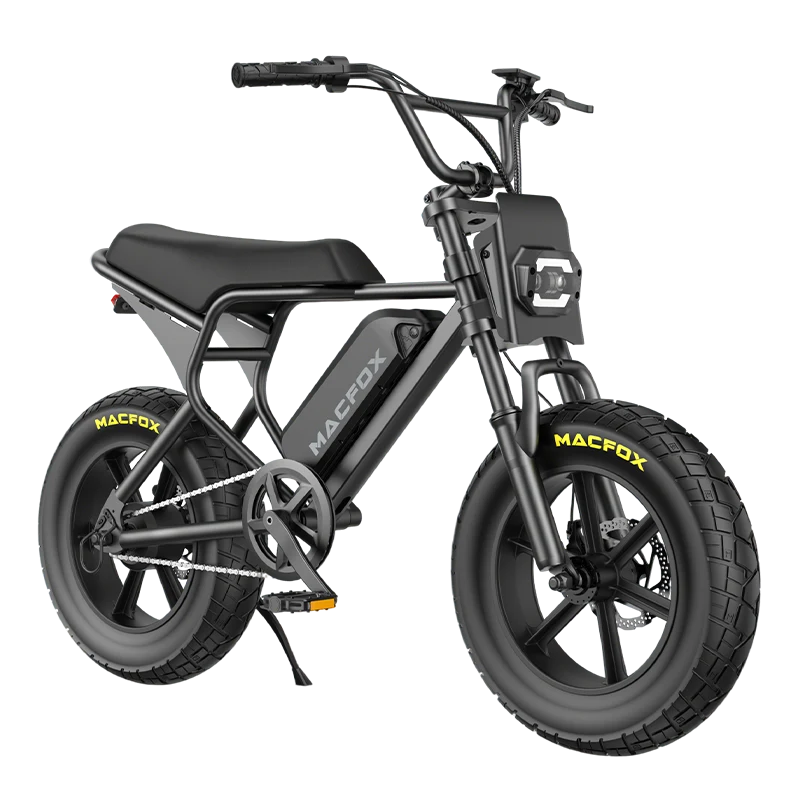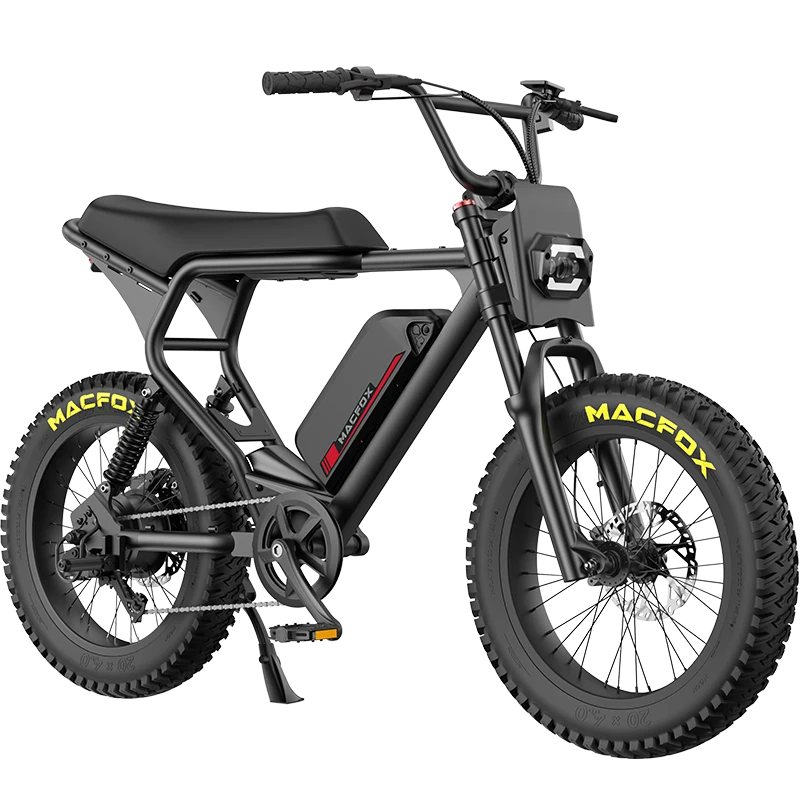Electric bicycles, typically referred to as E-Bikes, have actually seen an amazing rise in appeal in recent times, supplying an innovative blend of typical cycling with an electrical motor's help. This crossbreed technology has opened up the world of biking to a more varied group of people, interesting both biking enthusiasts and those seeking a much more obtainable form of outside task. In spite of their expanding appeal, E-Bikes encounter certain restrictions, especially on particular trails. This phenomenon elevates numerous questions and conversations about the reasons behind these limitations. This article aims to check out the myriad factors contributing to the limitations of E-Bikes on some trails, consisting of environmental influences, safety and security worries, regulatory frameworks, and the cultural dynamics within the cycling community.
Environmental Considerations and E-Bikes

Impact on Wildlife and Ecosystems
The introduction of E-Bikes on all-natural tracks generates substantial environmental worries. The peaceful electric motors of E-Bikes make it possible for motorcyclists to travel at higher speeds without producing much noise, a feature that, while advantageous in urban setups, poses threats in all-natural environments. Wildlife, accustomed to particular noise degrees and human activity patterns, can be stunned or disrupted by the abrupt appearance of fast-moving E-Bikes. This disturbance can interrupt the natural habits of animals, potentially causing adjustments in feeding, movement, and breeding patterns. In locations dedicated to wildlife preservation, the presence of E-Bikes might counteract initiatives to maintain sensitive environments. The need to secure these natural environments often necessitates the limitation of E-Bikes on tracks within conservation areas.
Trail Degradation and Maintenance
The effect of E-Bikes on route surface areas is another environmental concern. The mix of higher rates and the additional weight of the electrical motor and battery can exert even more force on trail surfaces than standard bikes, possibly resulting in sped up disintegration and destruction. This is particularly troublesome on tracks with delicate environments or in areas susceptible to erosion. The enhanced upkeep required to fix and upkeep these tracks can strain resources and result in longer periods of route closure, affecting all individuals. To stop such degradation, trail managers may decide to limit the use of E-Bikes on specific courses, protecting them for standard cycling and hiking.
Safety Concerns on Shared Trails
Speed Disparity Between E-Bikes and Traditional Bikes
One of one of the most pressing safety and security issues on common trails is the rate disparity in between E-Bikes and traditional bikes. E-Bikes, with their mechanized help, permit cyclists to preserve higher speeds with much less physical exertion. This rate distinction can be considerable, particularly on downhill segments or level stretches where E-Bikes can conveniently surpass pedal-only bikes. This disparity can create unsafe scenarios, particularly on narrow or congested routes where overtaking and navigating come to be more difficult. The possibility for accidents or near-misses rises, posturing a threat not only to E-Bike bikers but also to conventional bicyclists, walkers, and other trail users.
Navigational Challenges and Accident Risks
The layout and capacities of E-Bikes bring distinct navigational difficulties. Their enhanced torque and velocity can make handling harder, particularly for unskilled riders or in technological path areas. This can lead to a higher possibility of mishaps, as riders might locate it challenging to regulate their speed and navigate obstacles. In tracks with high descents, tight turns, or technological features, the danger of mishaps including E-Bikes can be dramatically higher. This enhanced danger aspect adds to the choice by trail authorities to restrict E-Bike access on specific courses, focusing on the safety of all path individuals.
Related Reading: Cold Weather Calls for a Heart-Warming Ride
Regulatory and Access Issues
Classification of E-Bikes and Trail Regulations
The lawful category of E-Bikes considerably influences their allowed use on routes. In several regions, E-Bikes are classified in different ways than conventional bicycles, typically being categorized as motorized vehicles. This classification subjects them to different policies and restrictions, especially on tracks designated for non-motorized tasks. The varied lawful status of E-Bikes throughout various territories can cause a patchwork of laws, with some locations permitting E-Bikes on routes while others restrict them. This inconsistency in classification and regulation plays a substantial role in the varying access civil liberties of E-Bikes on trails across various areas.
The two electric bicycles launched by Macfox are both Class 2 electric bicycles, which comply with the supervision of electric bicycles under US law.
➡️➡️➡️Macfox X1: https://macfoxbike.com/products/macfox-x1
➡️➡️➡️Macfox X2: https://macfoxbike.com/products/macfox-x2
Diverse Policies Across Regions
The policies governing the use of E-Bikes on routes vary extensively, not only internationally yet additionally within individual nations and localities. These policies are influenced by a multitude of factors, including environmental worries, path style, safety and security factors to consider, and regional cultural attitudes towards E-Bikes. In some areas, the integration of E-Bikes into the existing trail network has been fairly smooth, with very little limitations. In contrast, other regions have actually applied strict laws restricting or entirely prohibiting E-Bike gain access to. This variety in policy approaches reflects the complicated and multifaceted nature of the concern, requiring a nuanced understanding of the regional context when discussing E-Bike path gain access to.
Cultural and Social Factors

Perception of E-Bikes Among Traditional Cyclists
The rise of E-Bikes has not been without its social and social implications within the biking area. Some traditional bicyclists view E-Bikes as a separation from the 'pure' kind of biking, which is based upon physical exertion and endurance. This perception has actually resulted in a level of social friction between E-Bike bikers and conventional cyclists, particularly in areas with a solid cycling culture. The dispute typically focuses around the idea of 'making' one's way on the path, with some reactionaries suggesting that the mechanized assistance of E-Bikes reduces the obstacle and accomplishment related to trail riding. This social divide can influence mindsets towards E-Bike access on routes, with some promoting for different courses or specific restrictions for motor-assisted bikes.
Equity and Accessibility Issues
On the flip side, E-Bikes have been hailed as a fantastic equalizer in the biking globe, making the sporting activity more easily accessible to people who could otherwise discover typical biking also difficult or literally requiring. This consists of older people, individuals with impairments, or those recouping from injuries. E-Bikes permit these teams to join route riding, taking pleasure in the wellness benefits and the delight of outdoor activities. Nonetheless, the constraints placed on E-Bikes on particular tracks can inadvertently bring about problems of equity and ease of access. These restrictions can omit a significant segment of the population from delighting in and benefiting from these exterior rooms, elevating essential inquiries concerning inclusivity and access in the world of outdoor entertainment.
Conclusion
The dispute bordering E-Bike accessibility to trails is a representation of the advancing nature of outdoor recreation and the difficulties of integrating brand-new technologies into typical spaces. It includes a large range of elements, consisting of ecological conservation, security factors to consider, regulative frameworks, and the social characteristics within the biking area. As E-Bikes remain to expand in appeal, it is imperative for all stakeholders-- consisting of policymakers, route managers, environmentalists, and the biking area-- to participate in open and positive discussion. The objective ought to be to discover a balanced and comprehensive method that values the stability of natural surroundings, ensures the safety and enjoyment of all trail users, and acknowledges the altering landscape of biking and exterior leisure.
FAQs
Can E-Bikes be utilized on all routes?
No, making use of E-Bikes is not globally allowed on all routes. Limitations differ based upon ecological problems, safety and security guidelines, and local policies. Each path or region might have particular rules regarding E-Bike access.
Why are E-Bikes restricted from some tracks?
E-Bikes are limited on particular tracks because of a range of factors, consisting of prospective environmental impacts, safety concerns as a result of speed up variations and navigational obstacles, regulatory categories, and social dynamics within the cycling community.
Exist areas where E-Bikes are dealt with the like standard bikes?
Yes, in some areas, E-Bikes are categorized likewise to standard bikes and are permitted on the very same trails. However, this differs extensively depending upon local regulations, ecological factors to consider, and the style of the routes. It is necessary for E-Bike riders to be knowledgeable about the particular regulations in the areas they prepare to ride.


















